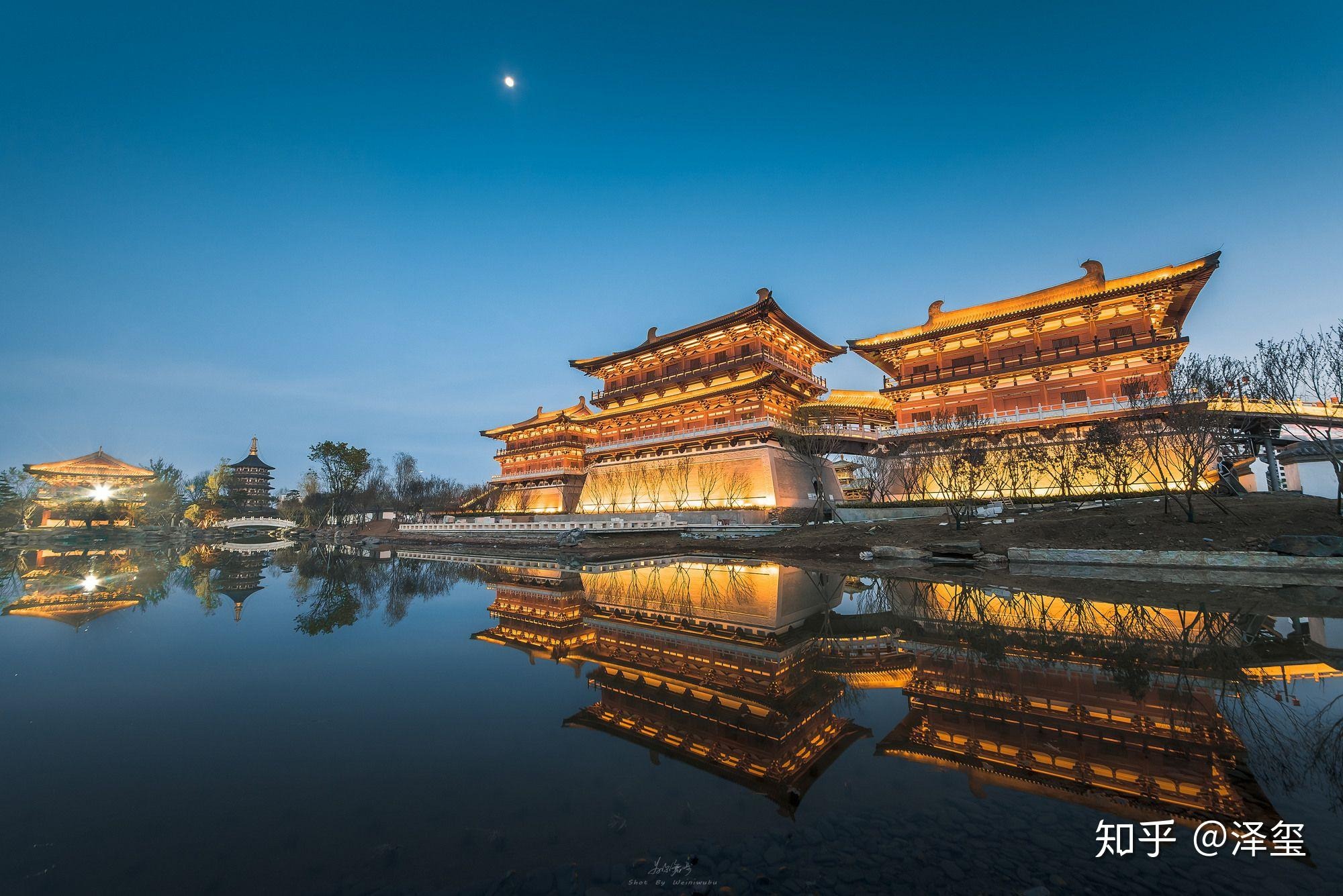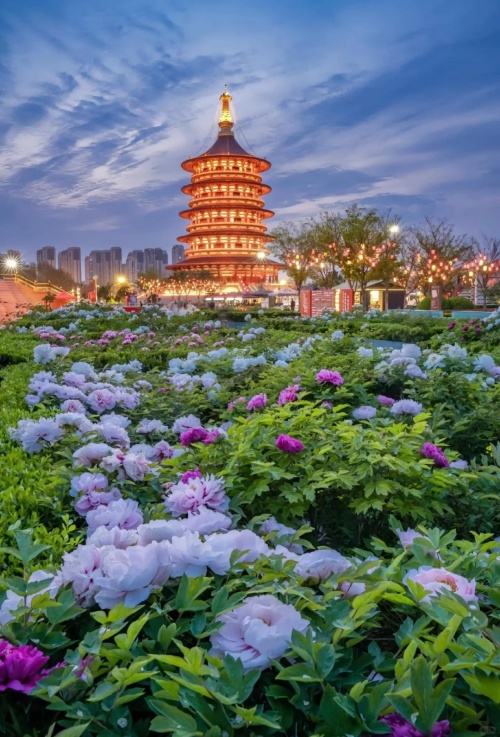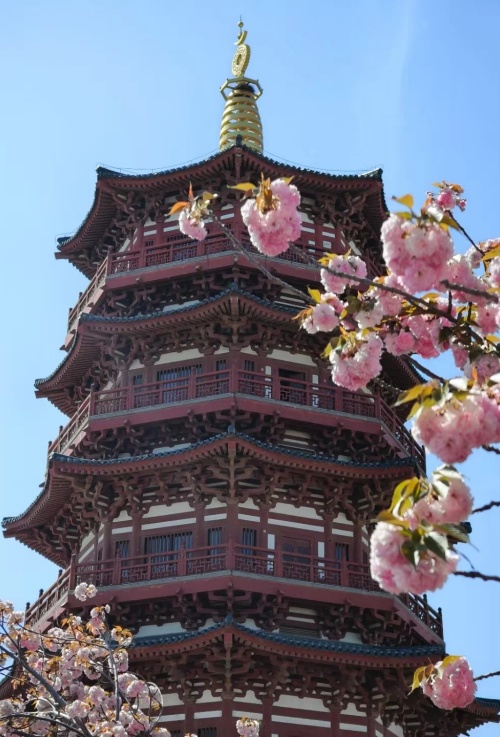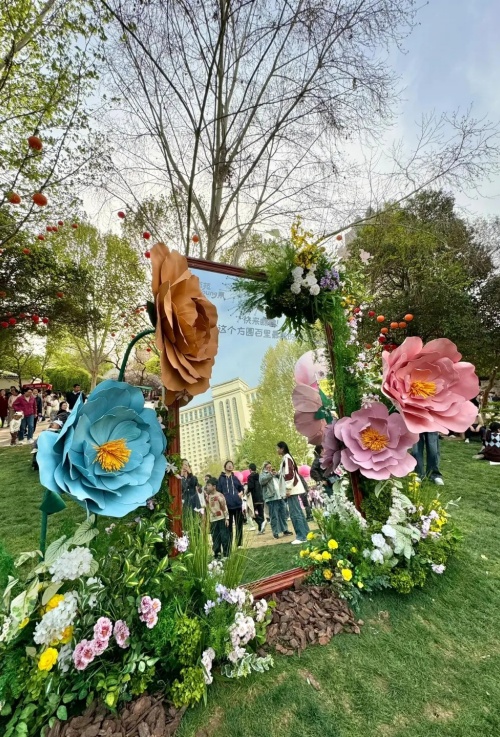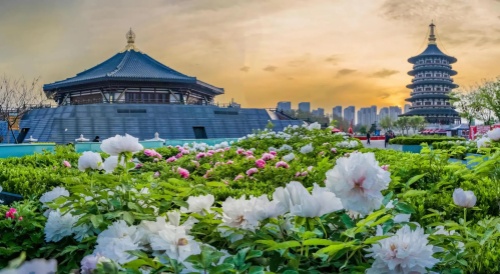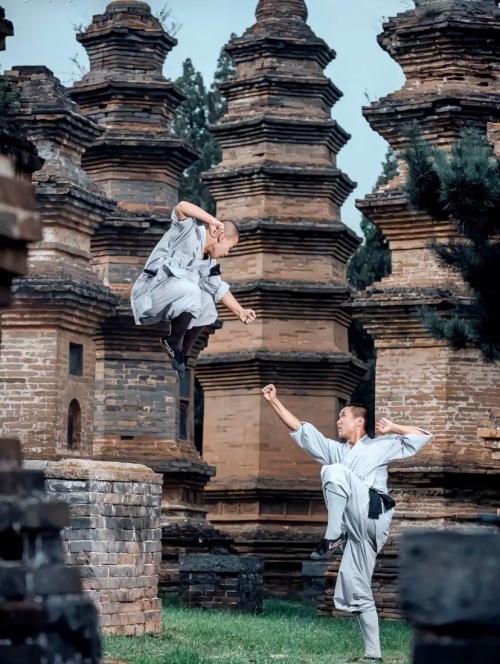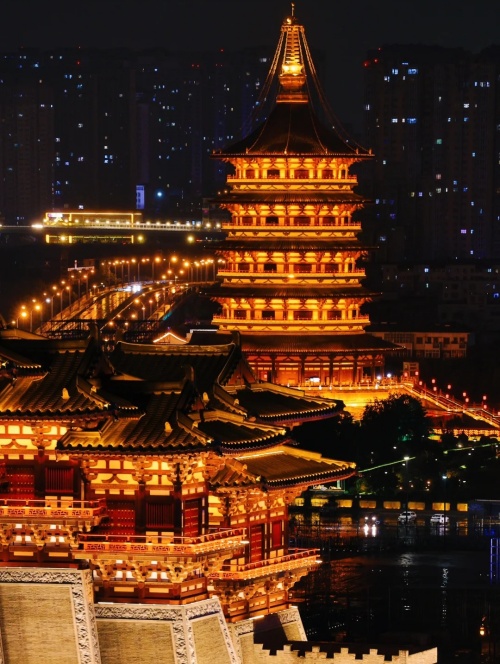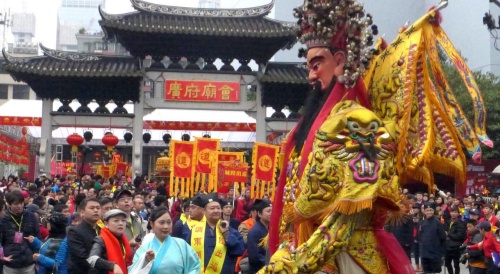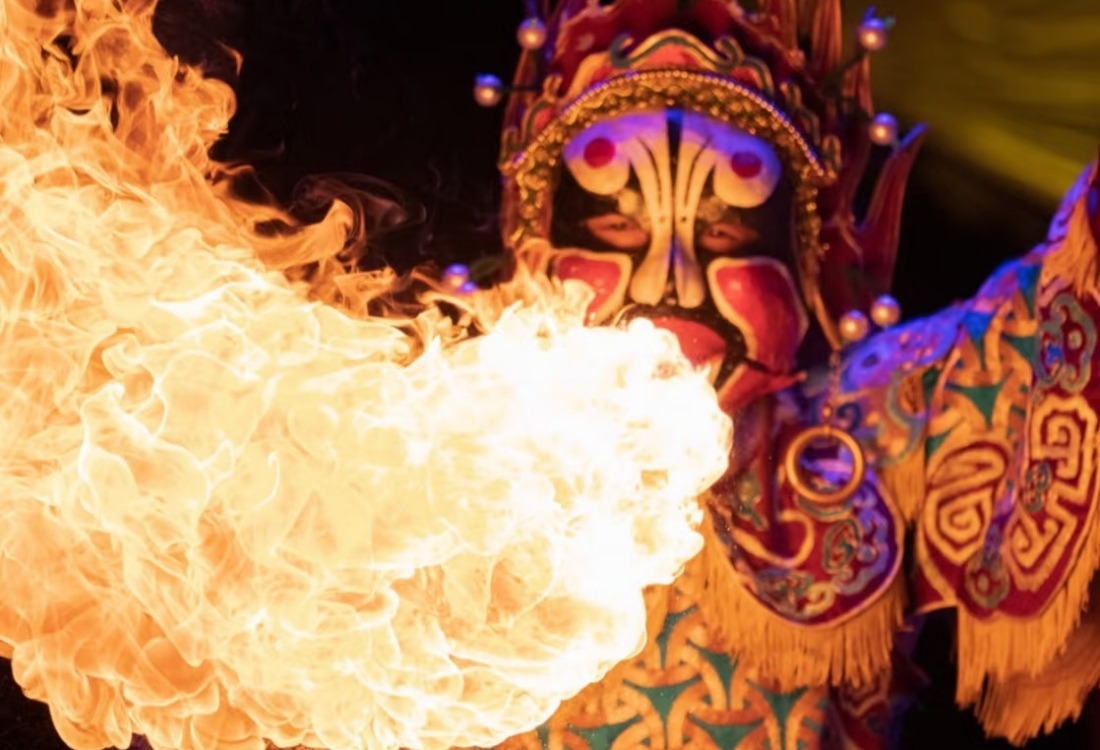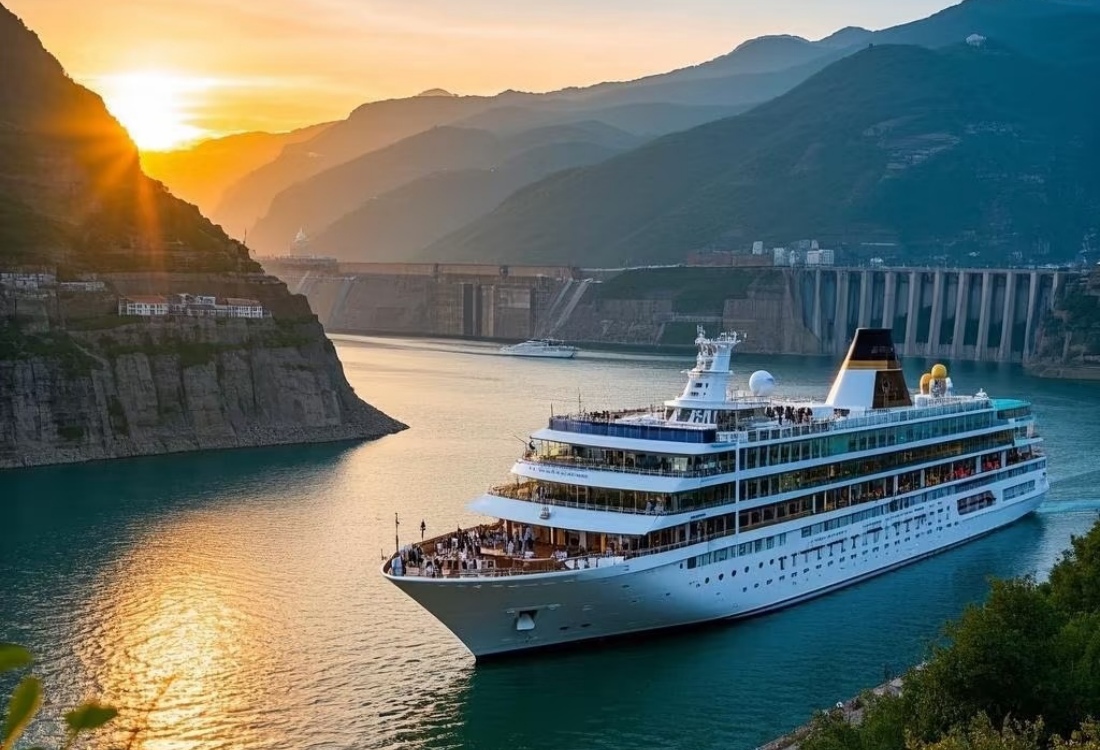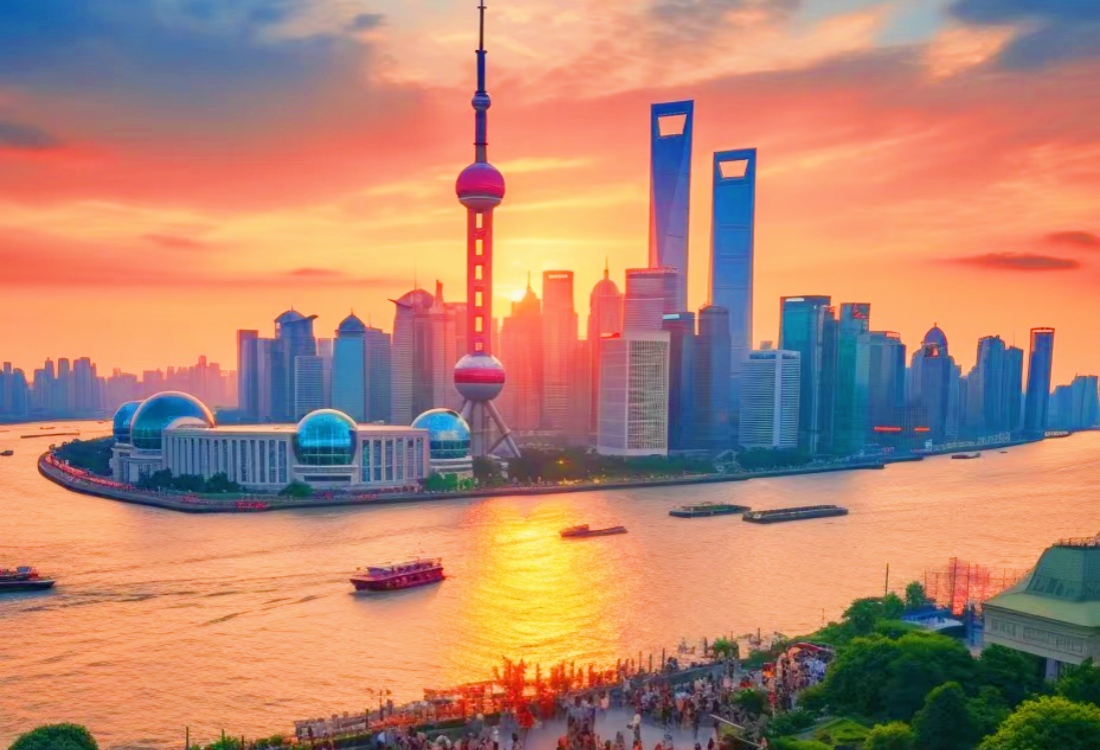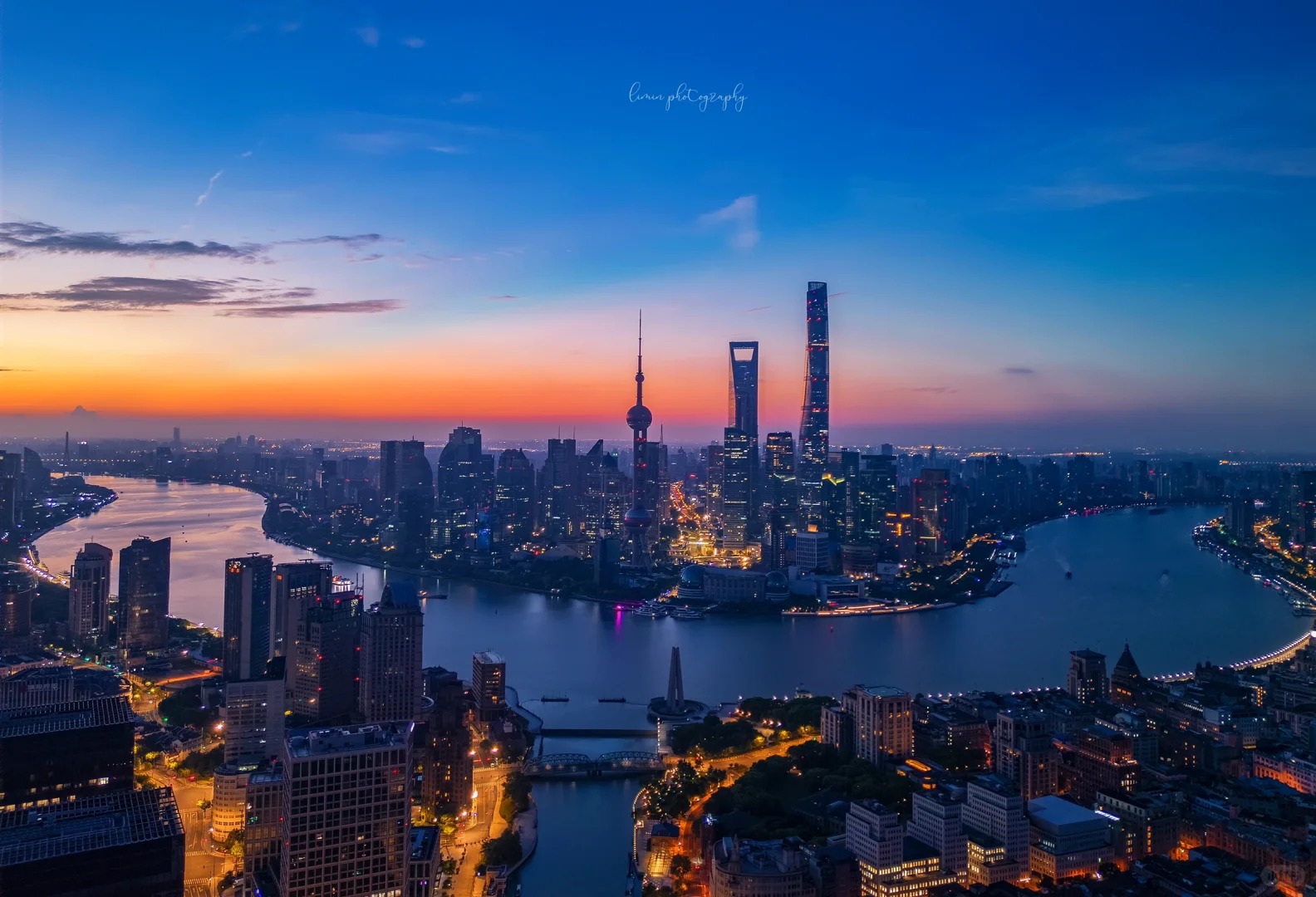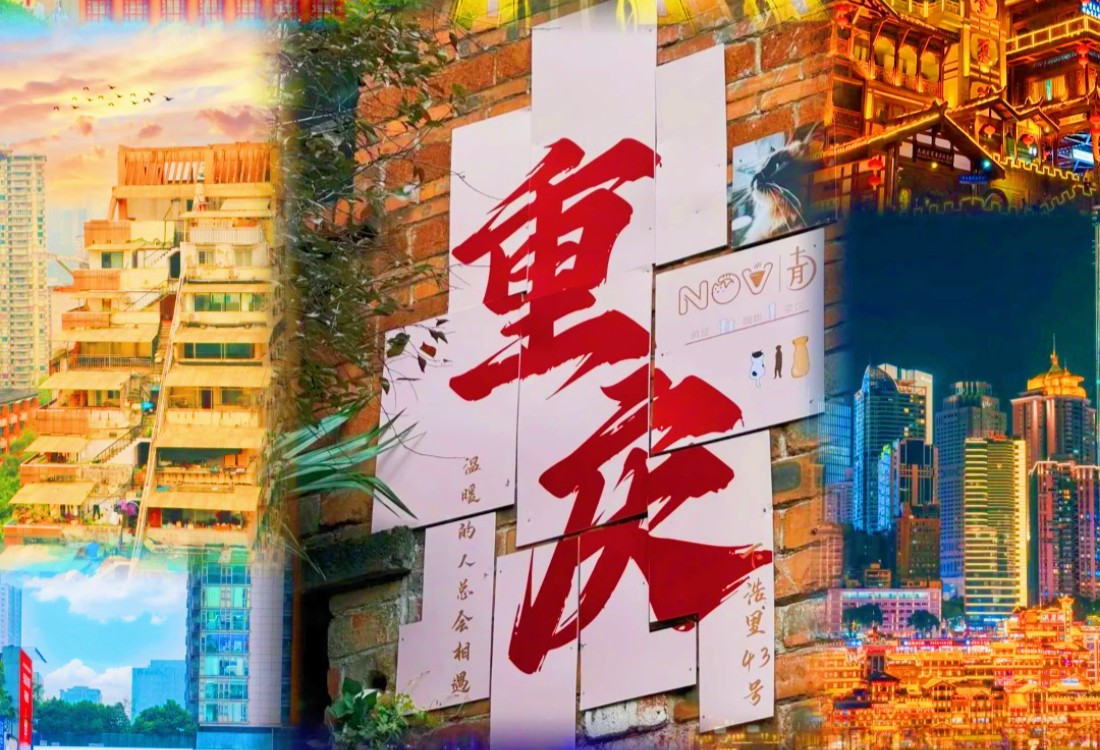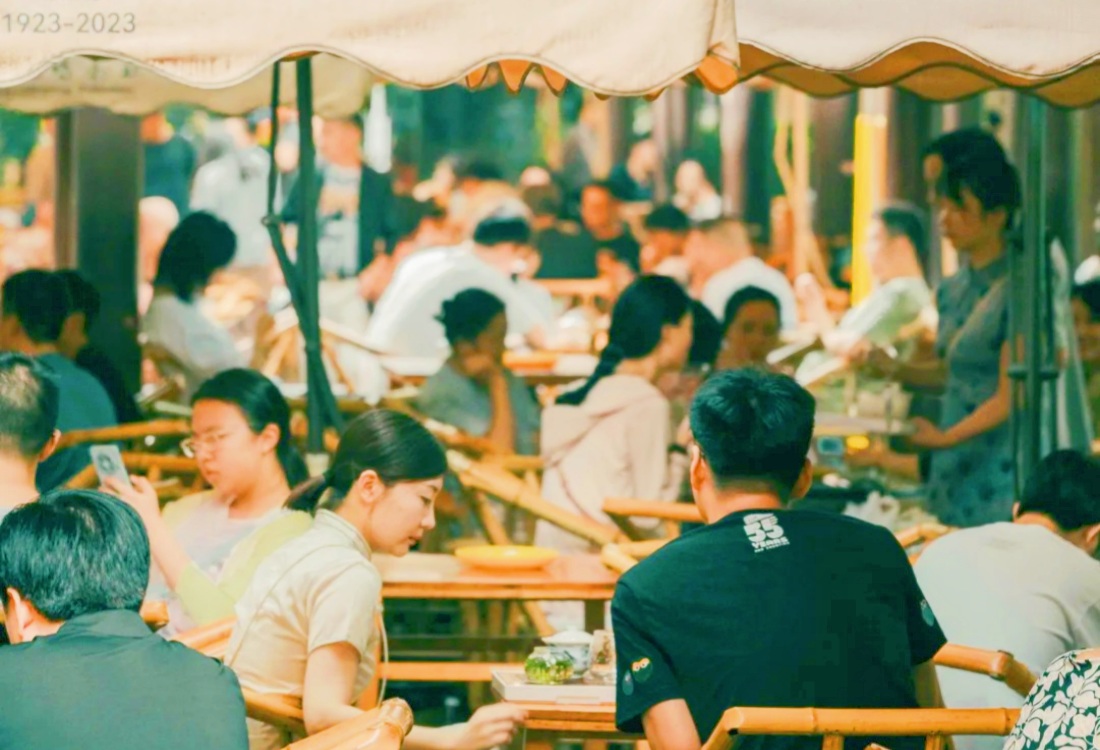Table of Contents
ToggleLuoyang, a city with roots stretching back over 4,000 years, stands as a monumental testament to Chinese civilization. Having served as the capital for thirteen imperial dynasties, this ancient metropolis is a treasure chest brimming with historical marvels, cultural richness, and vibrant local life. If you’re looking to step into a living history book, Luoyang offers an unparalleled journey. This guide will walk you through the must-see attractions and exciting activities that make Luoyang a truly unforgettable destination. Get ready to explore a city where every stone tells a story!
12 Must-See Attractions in Luoyang: A Journey Through Time
Luoyang is home to an array of historical and cultural sites that are essential viewing for any visitor. Each location offers a unique window into China’s vast and storied past.
1. Longmen Grottoes: A Masterpiece of Buddhist Art
No visit to Luoyang is complete without experiencing the awe-inspiring Longmen Grottoes. This UNESCO World Heritage site is a highlight of Chinese Buddhist art, featuring over 2,300 caves and niches and more than 100,000 statues meticulously carved into the limestone cliffs along the Yi River. These carvings span several dynasties, primarily from the Northern Wei to the Tang Dynasty (493 AD to 907 AD).
Key Features of Longmen Grottoes:
- Vairocana Buddha: The centerpiece is the colossal 17-meter high Vairocana Buddha in Fengxian Temple (Fengxiansi Cave), a stunning example of Tang Dynasty artistry, said to be modeled on Empress Wu Zetian.
- Artistic Evolution: The grottoes showcase the evolution of Chinese Buddhist art and sculpture over several centuries.
- Binyang Caves: Explore the Binyang Caves, particularly the Central Binyang Cave, which features 11 large Buddha statues and offers insights into ancient construction techniques, including unfinished sections.
- Photography Hotspot: The interplay of light and shadow on the sandstone cliffs, especially during spring and autumn, makes it a fantastic location for photography.
The site is located about 15 kilometers south of downtown Luoyang. Entry tickets are approximately CNY 90. Opening hours vary seasonally, typically 8:00 AM to 6:30 PM from April to October. Visiting early in the morning or late afternoon is recommended to avoid crowds.
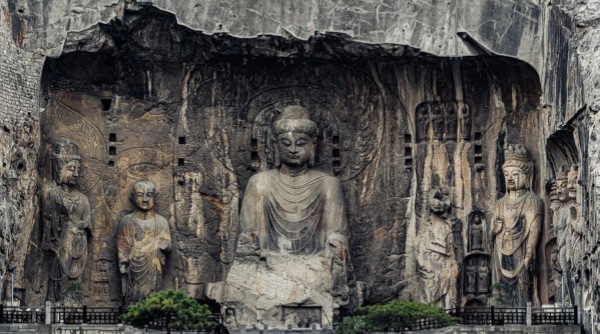
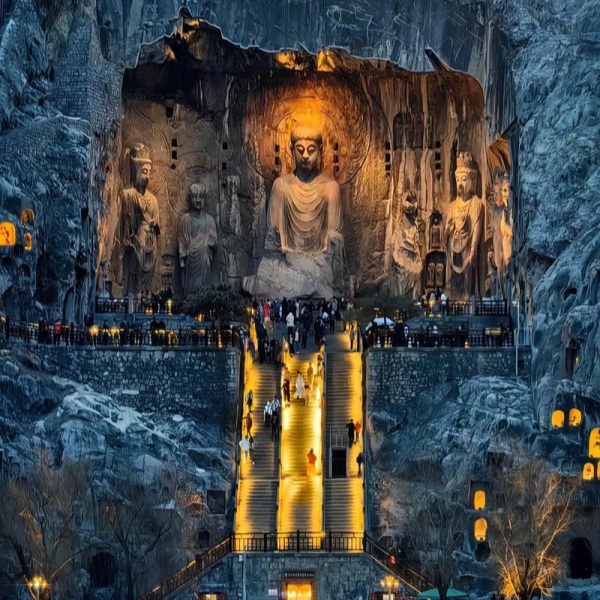
3 Days Luoyang Classic City Tour: Explore Longmen Grottoes
2. White Horse Temple (Baimasi): The Cradle of Chinese Buddhism
Step into the serene grounds of the White Horse Temple, widely considered the first Buddhist temple in China. Established in 68 AD during the Eastern Han Dynasty, it marks the introduction of Buddhism to the country by Indian monks. The temple complex houses ancient halls, sacred sutras, precious Yuan Dynasty-era lacquered statues, and intricate carvings, all set within peaceful gardens. It’s an important pilgrimage site and a place of quiet reflection.
What to See at White Horse Temple:
- Main Halls: Explore the five main halls, each showcasing different aspects of Buddhist iconography and history.
- International Zone: Discover the newer sections featuring replicas of famous Buddhist temples from India, Thailand, and Myanmar, showcasing global Buddhist connections.
- Historical Relics: View ancient stone tablets and statues that tell the story of Buddhism’s arrival and spread in China.
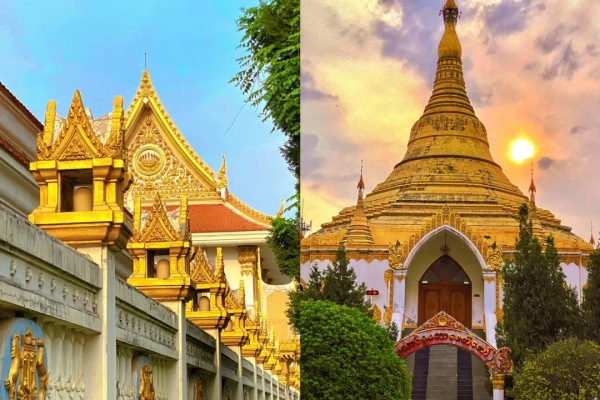
3. Luoyang Museum: A Gateway to 4,000 Years of History
Delve into Luoyang’s rich past at the Luoyang Museum. Housed in a distinctive ding-shaped modern building, the museum offers a comprehensive look at the city’s 4,000-year history and its role as a cultural and political center. Admission is typically free.
Exhibits and Collections:
- Heluo Civilization Exhibition: This permanent exhibition showcases the development of civilization in the Luoyang region.
- Diverse Artifacts: Discover a vast collection of artifacts, including Neolithic pottery, Bronze Age vessels, exquisite Tang Dynasty tri-color glazed pottery, jade carvings, and relics from Luoyang’s time as an ancient capital.
- Themed Displays: The museum features themed exhibits that highlight Luoyang’s artistic achievements and historical significance.
The museum is located about 6 kilometers from downtown Luoyang and provides an excellent context for understanding the historical sites you’ll visit.

4. Shaolin Temple: The Birthplace of Kung Fu (Day Trip)
While located in Dengfeng, about 80 kilometers (a 1.5 to 2-hour drive) east of Luoyang, the Shaolin Temple is a highly recommended day trip. Renowned as the birthplace of Zen Buddhism and Chinese Kung Fu, this ancient temple complex offers a fascinating experience.
Experiences at Shaolin Temple:
- Kung Fu Performances: Witness incredible martial arts demonstrations by Shaolin monks.
- Pagoda Forest: Explore the stunning Pagoda Forest, a collection of stone pagodas marking the burial sites of eminent monks.
- Temple Grounds: Wander through the historic temple halls and learn about its rich history.
- Kung Fu Classes: Some visitors opt for short beginner-level Kung Fu classes.

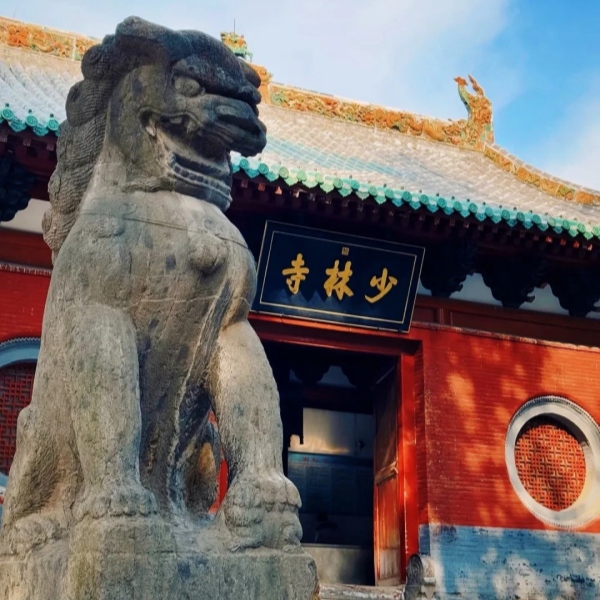
3 Days Luoyang Culture Tour: Shaolin Temple with Chinese Kung-fu
5. Guanlin Temple (General Guan’s Tomb)
Dedicated to the legendary General Guan Yu from the Three Kingdoms period, Guanlin Temple is a unique site combining a temple, a forest, and his tomb (it is said his head is buried here).
Guan Yu is a revered figure in Chinese culture, symbolizing loyalty, righteousness, and bravery.
This temple is a must-visit for history enthusiasts interested in tales of heroism and Chinese folklore.
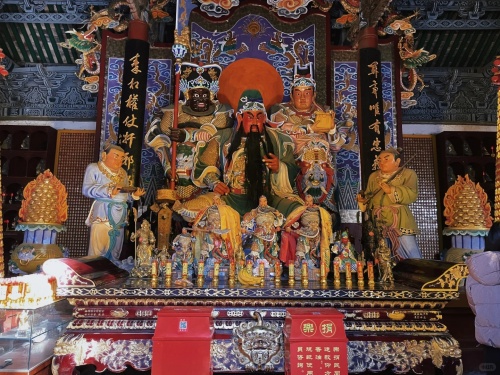
6. Mingtang and Tiantang Scenic Area: Imperial Grandeur
Step into the era of Empress Wu Zetian, China’s only female emperor, at the Mingtang and Tiantang Scenic Area. These are reconstructed versions of the imperial halls – the Mingtang (Hall of Brightness or Imperial Hall) and Tiantang (Heaven Hall or Hall of Worship) – that were central to her reign during the Tang Dynasty. The site hosts historical exhibitions and cultural performances, and is particularly stunning when lit up at night or during festivals like the Spring Festival, which features elaborate light shows.

7. Yingtian Gate: Witness to Dynastic Power
Yingtian Gate, known as “the first gate in the world” during its time, was the main southern gate of the imperial city during the Sui and Tang Dynasties.
Today, you can visit the Yingtianmen Site Museum, built over the archaeological ruins. The reconstructed gate, with its unique “concave” shape, offers a glimpse into the grandeur of ancient Chinese architecture and is impressively illuminated at night with vibrant lantern lights.
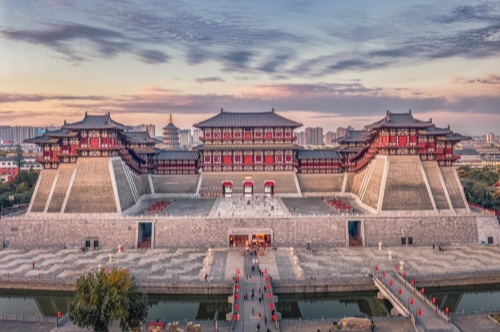
8. Luoyang Laojun Mountain: Taoist Serenity and Natural Beauty
For nature lovers and those seeking spiritual tranquility, Laojun Mountain offers a breathtaking escape. This Taoist mountain is celebrated for its cultural significance and stunning natural landscapes, including distinctive rock formations and ancient caves like Jiguan Cave. Hike the scenic trails to Yuhuangding (Jade Emperor Peak) for panoramic views, and if you time it right, witness spectacular sunrises and the ethereal “sea of clouds” from Mazongling. The best time to visit is from late April to early November.
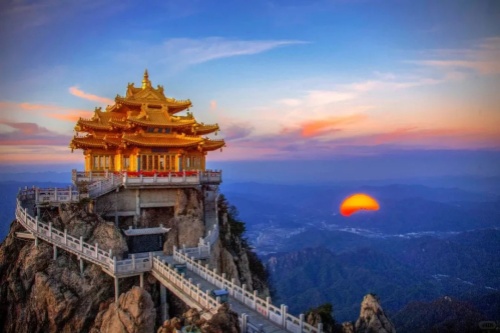
9. Tianzi Jialiu Museum (Museum of Emperor’s Chariot Drawn by Six Horses)
This unique museum is built directly on an archaeological site where chariots and horses from the Eastern Zhou Dynasty (over 2,000 years ago) were buried. It offers a fascinating insight into ancient transportation, burial customs, and the social hierarchy of the time. Seeing the actual remains of the chariots and horse skeletons in their original burial pits is a striking experience.

10. Luoyang Ancient Art Museum (Luoyang Museum of Ancient Tombs)
Located in the northern part of the city, this museum is unique as it showcases around 25 restored ancient tombs from various dynasties, including the Western Han, Eastern Han, Wei, Jin, and Northern Song Dynasties.
It provides an unparalleled opportunity to see tomb architecture and murals up close, offering insights into ancient beliefs about the afterlife.
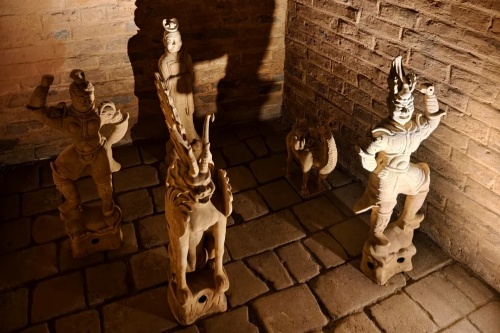
11. Luoyang Old City (Lijing Gate Area)
Experience the lively atmosphere of Luoyang’s Old City, particularly around Lijing Gate.
This area is filled with traditional-style buildings, bustling markets, street food vendors, and shops selling local crafts and souvenirs.
It’s especially vibrant at night, offering a great chance to soak in the local culture and enjoy some shopping.
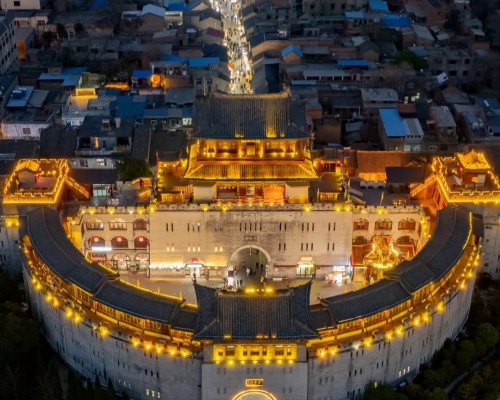
12. Parks and Gardens for Relaxation
Wangcheng Park
Wangcheng Park is a large public park built on the ruins of the ancient capital of the Eastern Zhou Dynasty. It features beautiful gardens, lakes, ancient trees, and is a popular spot for locals. During the Peony Festival, it hosts impressive flower displays. It also houses Luoyang’s zoo, though some reports suggest conditions may be basic.
Luopu Park
Stretching for nearly 10 kilometers along the Luo River, Luopu Park is an ideal place for a leisurely stroll, a picnic, or birdwatching. It offers a green escape from the bustling city.
Sui and Tang Relics Botanical Garden
This expansive botanical garden is renowned for its collection of peonies, including the unique Silver Thread Top Peony. It’s a beautiful place to wander, especially during the blooming season.
Xiyuan Park
Situated on the grounds of the Sui Dynasty’s Xiyuan Ruins, this park focuses on peonies and bonsai cultivation. It offers themed tour activities within its exotic gardens.
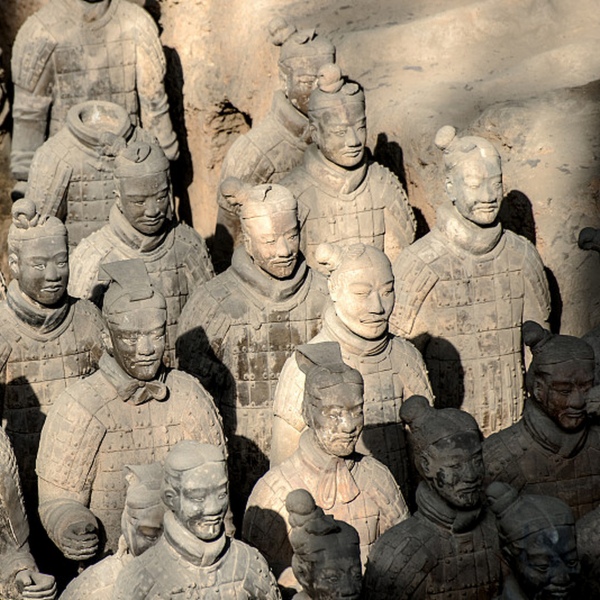
12 Days Ancient China Tour : Beijing Luoyang Xi’an Zhangjiajie
Fun Activities to Do in Luoyang: Engage with Culture and History
Beyond sightseeing, Luoyang offers a variety of activities that allow you to immerse yourself in its rich heritage and vibrant contemporary life.
Attend the Luoyang Peony Festival
If your visit coincides with April (peak bloom season, typically early April to early May), the Luoyang Peony Festival is an absolute must. Luoyang is famed as the “City of Peonies,” and during the festival, the city bursts into a riot of color with millions of peonies in bloom across various parks and gardens like Luoyang National Peony Garden, Wangcheng Park, and Sui and Tang Relics Botanical Garden. Enjoy traditional performances, cultural exhibitions, and local snacks amidst the stunning floral displays.
Savor Luoyang’s Unique Cuisine
No trip is complete without indulging in the local food. Luoyang offers some distinct culinary experiences:
- Luoyang Water Banquet (Shui Xi): This is Luoyang’s signature dish, a multi-course meal where most dishes are soup-based, served sequentially like flowing water. It features a variety of flavors, from sour and spicy to sweet.
- Hu La Tang: A popular breakfast item, this is a spicy and savory pepper soup often containing meat, vegetables, and noodles.
- Bufan Soup: A local specialty made with mung-bean crepes, wood-ear mushrooms, and other ingredients in a savory broth.
- Street Food: Explore the night markets in the Old City for delicious and affordable street snacks, including various noodles and dumplings.
Watch or Try Kung Fu
With the legendary Shaolin Temple nearby, experiencing Kung Fu is a quintessential Luoyang activity. Watch captivating martial arts shows performed by skilled monks, or if you’re feeling adventurous, participate in a beginner-level Kung Fu class to learn some basic moves and principles.
Immersive Hanfu Wearing Experience
Enhance your visit to historical sites like Mingtang and Tiantang Scenic Area or the Old City by dressing in traditional Hanfu (ancient Han Chinese clothing). Many shops offer Hanfu rentals, allowing you to take memorable photos and connect with the city’s ancient past in a fun and immersive way.
Nighttime Exploration of Luoyang Old City
As dusk falls, Luoyang’s Old City, especially around Lijing Gate, comes alive. The historic streets are beautifully illuminated, creating a magical atmosphere. Stroll through the bustling night markets, browse local crafts, sample street food, and soak in the lively ambiance. The Yingtian Gate and Mingtang and Tiantang Scenic Area are also spectacular when lit up at night.
Admire Tang Tri-color Glazed Pottery
Luoyang is famous for its Tang Sancai, or tri-color glazed pottery, dating back to the Tang Dynasty. These vibrant ceramic pieces, often depicting horses, camels, and human figures, are iconic examples of Chinese artistry. Visit local workshops or the Luoyang Museum to see these masterpieces and perhaps purchase a replica as a souvenir.
Experience Guanlinzhen (Temple Fair)
If you happen to be in Luoyang during the Chinese New Year period, don’t miss the Guanlinzhen, a traditional temple fair held at Guanlin Temple. It’s a festive event featuring traditional performances, local snacks, folk art, and various cultural activities, offering a vibrant taste of local traditions.
Luoyang Attractions Overview Table
Here’s a quick summary of some key attractions in Luoyang to help you plan your itinerary:
| Attraction Name | Type | Key Feature | Best For |
|---|---|---|---|
| Longmen Grottoes | Historical/Artistic Site | UNESCO site, 100,000+ Buddhist statues | History buffs, art lovers, photographers |
| White Horse Temple | Religious/Historical Site | China’s first Buddhist temple | Spiritual seekers, history enthusiasts |
| Luoyang Museum | Museum | Extensive collection of local historical artifacts | Understanding regional history, art appreciation |
| Shaolin Temple (Day Trip) | Religious/Cultural Site | Birthplace of Kung Fu and Zen Buddhism | Martial arts fans, cultural explorers |
| Laojun Mountain | Natural/Religious Site | Taoist mountain, scenic beauty, hiking | Nature lovers, hikers, spiritual seekers |
| Mingtang & Tiantang Scenic Area | Historical Reconstruction | Recreated Tang Dynasty imperial halls | History buffs, cultural experiences, night views |
| Luoyang Old City (Lijing Gate) | Cultural/Shopping Area | Traditional architecture, night markets, local life | Experiencing local culture, foodies, shoppers |
| Luoyang Peony Festival (Seasonal) | Event/Festival | Millions of blooming peonies, cultural shows | Flower enthusiasts, cultural experiences |
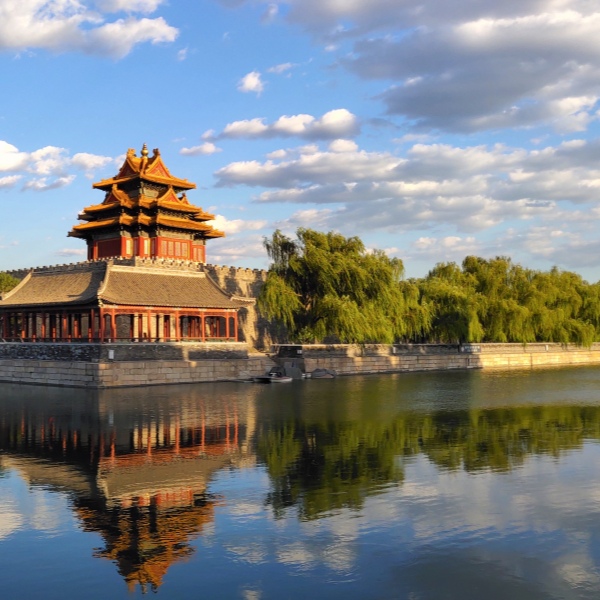
8 Days China Ancient Capitals Tour: Beijing Xi’an Luoyang
Practical Tips for Your Luoyang Visit
To make your trip to Luoyang smooth and enjoyable, keep these tips in mind:
Best Time to Visit
- Spring (April-May): Ideal for the Peony Festival and pleasant weather. However, this is also peak tourist season.
- Autumn (September-October): Offers mild temperatures and clear skies, perfect for sightseeing.
- Avoid Crowds: If possible, avoid visiting during Chinese public holidays, major festivals (like the Peony Festival if you prefer fewer people), and summer break (July-August) for popular sites like Longmen Grottoes and Shaolin Temple. Weekdays are generally less crowded than weekends.
For detailed guide about when to visit Luoyang, please read the following article:
Best Time to Visit Luoyang: A Complete Seasonal Guide
Getting Around
- Air: Luoyang Beijiao Airport (LYA) serves domestic flights.
- Train: Luoyang Longmen Railway Station is a major hub for high-speed trains, connecting to cities like Beijing, Xi’an, and Shanghai. Luoyang Railway Station serves regular trains.
- Local Transport:
- Buses: Luoyang has an extensive and affordable public bus system.
- Taxis: Taxis are readily available and relatively inexpensive for getting around the city.
General Advice
- Accommodation: Luoyang offers a range of accommodation options, from budget hostels to upscale hotels. Book in advance, especially during peak season.
- Comfortable Shoes: You’ll be doing a lot of walking, especially at sites like the Longmen Grottoes and Laojun Mountain.
- Stay Hydrated: Carry water, especially during warmer months.
- Sun Protection: Bring a hat, sunglasses, and sunscreen, particularly if visiting in spring or summer.
- Entry Fees: Check the latest entry fees for attractions online or with your tour operator, as they can change.
- Guides: Consider hiring a local guide for major historical sites to get deeper insights, though many sites also offer audio guides.
Frequently Asked Questions (FAQ)
What is Luoyang most famous for?
Luoyang is most famous for the Longmen Grottoes, a UNESCO World Heritage site with thousands of Buddhist statues, and for being one of the Four Great Ancient Capitals of China. It’s also renowned for the White Horse Temple, considered China’s first Buddhist temple, and the annual Luoyang Peony Festival.
How many days should I spend in Luoyang?
To see the main attractions like Longmen Grottoes, White Horse Temple, Luoyang Museum, and perhaps a day trip to Shaolin Temple, 2 to 3 days are generally recommended. If you wish to explore more deeply, including Laojun Mountain or attend the Peony Festival, you might want to allocate 4 to 5 days.
Is Luoyang easy to visit for English speakers?
While Mandarin Chinese is the primary language, major tourist attractions like Longmen Grottoes and prominent hotels often have English-speaking staff and signage. Using translation apps can be very helpful for communication. Hiring an English-speaking guide for key sites can greatly enhance your experience.
What is the best way to get from Xi'an to Luoyang?
The high-speed train is the best way to travel between Xi’an and Luoyang. The journey typically takes around 1.5 to 2 hours, connecting Xi’an North Railway Station with Luoyang Longmen Railway Station. It’s fast, comfortable, and efficient.
What local food must I try in Luoyang?
The Luoyang Water Banquet (Luoyang Shuixi) is a must-try. It’s a unique multi-course meal featuring various soup-based dishes. Other local specialties include Hu La Tang (spicy pepper soup) and various noodle dishes. Don’t miss exploring the street food in the Old City.

